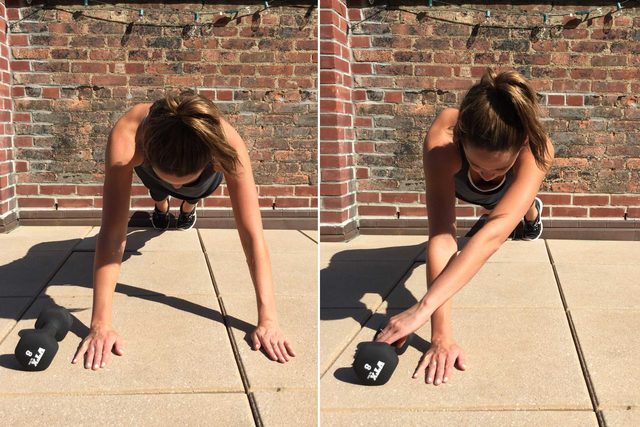
Core stability exercise: The plank
Nolan Lee, DC, MSAC, CES, E-RYT, is a big proponent of core stability exercises like the plank and its many variations. One plank favourite is to hold high plank (arms extended versus on forearms) and alternate a weight between each hand. The weight should sit next to one hand and be pulled across the body with the opposite hand. Repeat this exercise for one minute. “Alignment of the spine should be neutral to maintain ideal core activation,” Lee says. “A good point of focus is the pelvis. If you can keep the pelvis neutral, not tilting it forward or backward, the low back should remain neutral. Plank can be a good way to work on a neutral, stable spine.”
Jess Fritsche, an ACSM certified Health and Wellness specialist and NCCPT Personal Trainer, reminds us to breathe. “Exhale while you lift the weight and inhale while you return to start position or relax,” she says.
(Related: This Is the Best Fitness App for You)
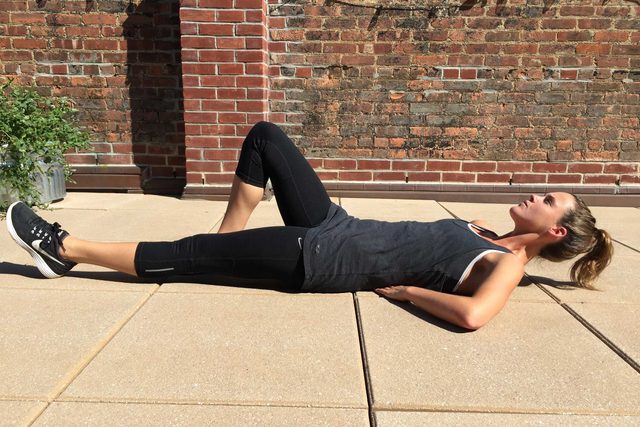
Core stability exercise: The McGill curl up
To avoid creating too much flexion in the lumbar spine, Lee recommends the McGill curl up. To complete this movement, lie on your back with one leg straight and one leg bent. Place your forearms and hands under your low back. Lift your head, chest and shoulders off the floor as much as you can without jutting out your chin. “Everything moves in one piece like there is a board under you, from the tailbone to head. You might not lift very far, but that is okay,” Lee says. Do two sets of 10, switching legs between sets. Here’s why your back might be hurting—and what you can do about it.
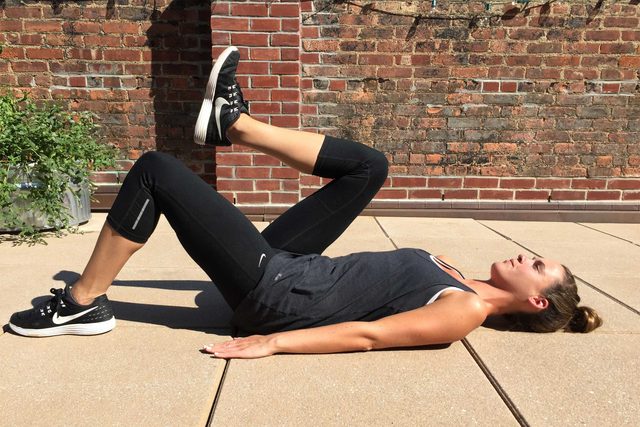
Core stability exercise: Marching
For those just building a fitness routine and a foundation for more complex moves, Brent Locey, NASM, certified personal trainer and SoulCycle instructor, recommends core stability exercises, such as marching. To complete this exercise, lie on the floor with your knees together and bent, feet flat and arms by your side. Lift one leg at a time, maintaining the bend, and draw the knee as close to the abdomen as possible.
Locey says it’s important to practice the “drawing-in maneuver” during all core exercises. To draw-in, pull the area below your navel towards your spine, while maintaining a neutral spine. “I often coach this by placing your hand on that area and noticing as you inhale how your stomach draws toward your back,” Locey says. “The most important thing to focus on, especially for beginners, is making sure they have adequate balance and stability… [Otherwise] you could easily injury yourself immediately, or develop long-term injury because your body starts to overcompensate in the wrong areas.”
(Related: 11 Workout Moves You Can Do With Everyday Objects You Have at Home)
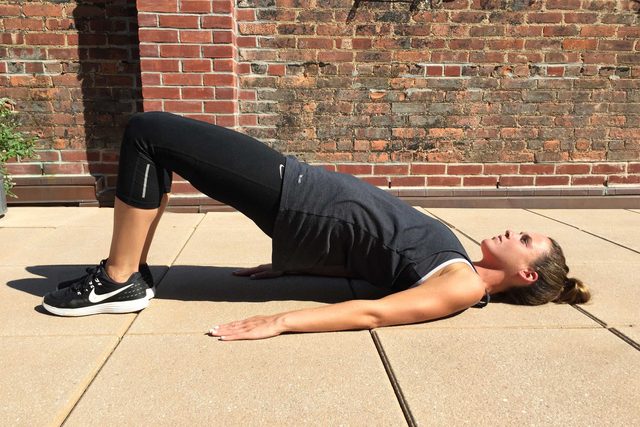
Core stability exercise: Two-leg floor bridge
Another great exercise for foundation work is the two-leg floor bridge. Lying on the floor with your knees together, bent, feet flat, and arms by your side, lift your pelvis and hips off the so that your knees, hips, and shoulders are all in line. Slowly lower to the floor and repeat. Locey recommends doing one to four sets of this core stability exercise, with 12-20 repetitions.
(Related: Why Exercise Can Be the Most Effective Way to Relieve Stress)
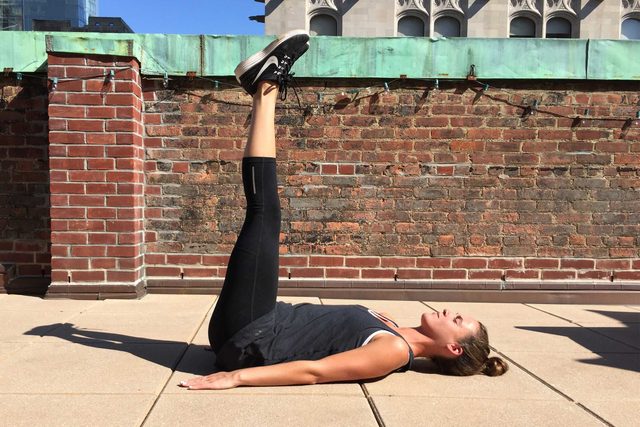
Core strength exercise: Pulse-ups
A pulse up is a progression from a core stability exercise; it is considered a strength core exercise. Lying down face up, bring your legs toward the ceiling, with the soles of your feet adjacent to the ceiling. Lift your legs, posterior, or rear, and low back off of the ground to “pulse” up as high as you can. As you return to the starting position, Locey says to brace your core to limit the amount your legs fall toward the ground as much as possible.
(Related: 6 Myths About How to Strengthen Your Core)
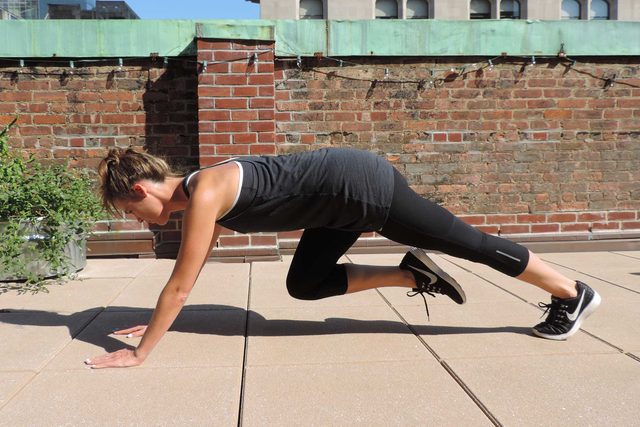
Core strength exercise: Mountain climbers
Mountain climbers are also strength core exercises, a progression from stabilization exercises, says Locey. Starting in a high plank position, begin to run in place, bringing your lead knee as close to the same-side elbow as possible. As you alternate your legs, resist the urge to lift your hips and posterior, maintaining a solid brace and engagement of your core throughout. Locey says this is a common mistake. “If an exercise is too advanced or difficult, or if you start to fatigue, our bodies often try to compensate and continue to work through the exercise by finding the path of least resistance, [like] losing proper form to make the movement easier.”
(Related: Can’t Fit In a Full At-Home Workout? Do This)
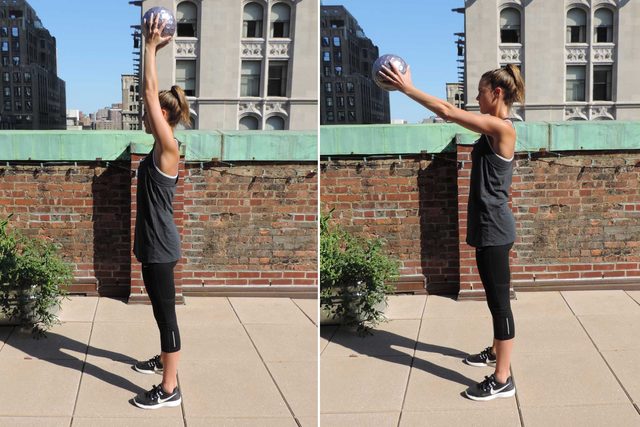
Core power exercise: Soccer throw
Once you’ve built a foundation and your progression continues, move into power core exercises like this one. To complete a soccer throw, stand tall with a medicine ball (weight of your choice) overhead. Quickly throw the ball toward the floor and follow through with the arms. Complete two to three sets of this power core exercise, repeating the steps for eight to 12 repetitions. Your abdominals should be engaged, says Fritsche. The most common mistake she sees is that people go through the motions and don’t focus on tightening and engaging the core muscles. Locey describes it as a great total body exercise. “It is working not only your upper and lower abs as you go from a total stretch with your hands above [your head], to squeezing your abdominals as you forcefully throw the ball down to the floor, but [it] also works your triceps and latissimus dorsi (back).”
(Related: 7 Best Cardio Workouts You Can Do at Home)
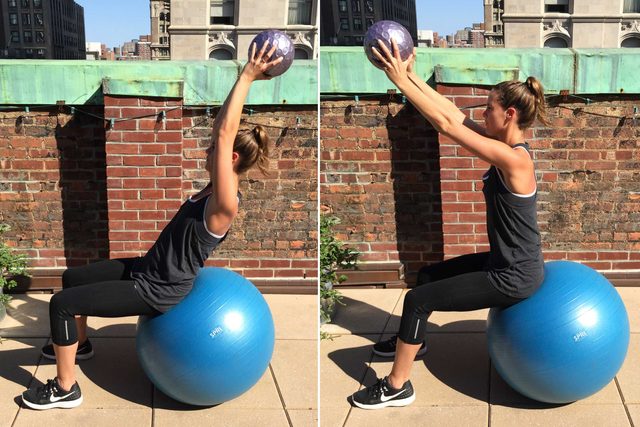
Core power exercise: Swiss Ball with medicine ball pullover throw
Placing a Swiss exercise ball under your lower back, bend your knees at a 90-degree angle with your feet flat on floor. Hold a medicine ball overhead with your arms extended. Quickly sit up and throw the ball against a wall or to a partner. Catch and repeat.
